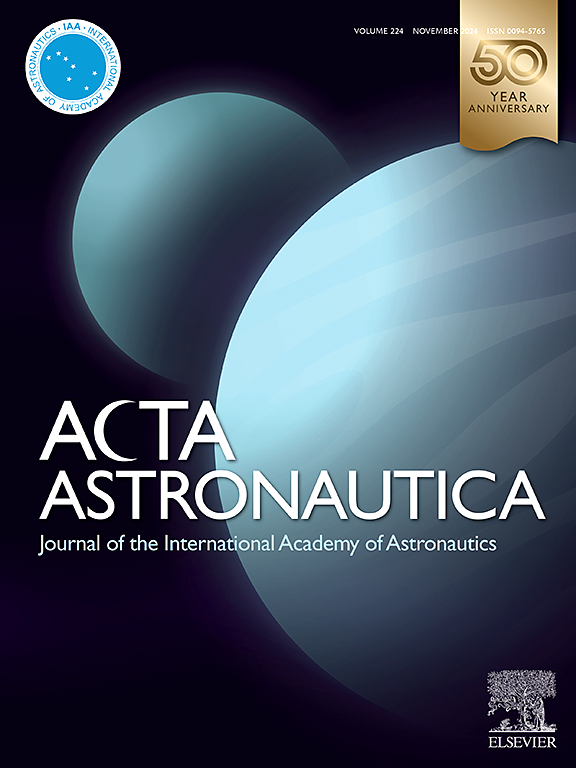月壤基碱活化材料和烧结月壤建筑材料研究进展
IF 3.1
2区 物理与天体物理
Q1 ENGINEERING, AEROSPACE
引用次数: 0
摘要
在过去的十年里,已经有许多研究提出了基于风化层的材料,如基于风化层的地聚合物和烧结块,用于月球表面的永久载人任务,就像美国国家航空航天局等航天机构提出的那样。在这篇综述文章中,对上述两种材料的研究现状进行了调查,概述了它们的制造方法,以及用于满足月球表面恶劣环境条件的混合设计。对于基于风化层的地聚合物,主要的沉积方法是铸造零件和大规模3D挤出打印。对于这一应用,研究人员一直致力于寻找含水量、极端温度固化和真空固化对最终机械性能和形态的关系。由于研究人员可以使用各种各样的活化溶液和表土模拟剂,因此主要关注的是优化沉积和模拟化学的工艺方法。在风化层烧结中也可以看到类似的情况,其中加热方法、结构和预处理限制了零件的形状和最终性能。这些烧结块被证明具有很高的抗压强度,但受到部件尺寸的限制,并且由于不一致的粉末成分而在性能上具有很高的可变性。本文综述了月球建筑材料的固化条件、测试和制造方法等方面的研究,发现在提供月球建筑材料的大规模力学和降解数据集方面存在研究空白。这一差距还与缺乏标准化的风化模拟和固化方法相关联,这些方法无法准确预测月球任务规划者所期望的条件。本文章由计算机程序翻译,如有差异,请以英文原文为准。
A review of lunar regolith based alkali activated materials and sintered regolith for use as a construction material
Over the last decade there have been numerous studies that propose regolith-based materials, such as regolith based geopolymers and sintered blocks, for permanent manned missions on the lunar surface, like those proposed by space agencies like the National Aeronautics and Space Administration in the US. In this review paper the current state of research was investigated for both of the materials described above, providing an overview of the methods of manufacture for their deployment as well as the mix designs used to meet the harsh environmental conditions of the lunar surface. For regolith based geopolymers, the primary methods of deposition are cast parts and large-scale 3D extrusion printing. For this application researchers have been focused on finding the relationship between water content, extreme temperature curing, and vacuum curing on the final mechanical performance and morphology. Because of the wide range of activation solutions and regolith simulants available to researchers, the main concern has been placed on optimizing the process methods for deposition and simulant chemistry. A similar situation is seen in regolith sintering where the heating method, configuration, and pretreatment limit the shape of the parts and the final properties. These sintered blocks were shown to have a high compressive strength but are limited by the part size and have high variability in performance due to inconsistent powder compositions. Based on our review, the research discussed in this paper on the curing conditions, testing, and manufacturing methods for lunar construction materials, a research gap was seen in providing large scale mechanical and degradation datasets on these materials for construction applications. This gap was also paired with a lack of standardization in regolith simulants and curing methods that accurately predict the conditions expected by lunar mission planners.
求助全文
通过发布文献求助,成功后即可免费获取论文全文。
去求助
来源期刊

Acta Astronautica
工程技术-工程:宇航
CiteScore
7.20
自引率
22.90%
发文量
599
审稿时长
53 days
期刊介绍:
Acta Astronautica is sponsored by the International Academy of Astronautics. Content is based on original contributions in all fields of basic, engineering, life and social space sciences and of space technology related to:
The peaceful scientific exploration of space,
Its exploitation for human welfare and progress,
Conception, design, development and operation of space-borne and Earth-based systems,
In addition to regular issues, the journal publishes selected proceedings of the annual International Astronautical Congress (IAC), transactions of the IAA and special issues on topics of current interest, such as microgravity, space station technology, geostationary orbits, and space economics. Other subject areas include satellite technology, space transportation and communications, space energy, power and propulsion, astrodynamics, extraterrestrial intelligence and Earth observations.
 求助内容:
求助内容: 应助结果提醒方式:
应助结果提醒方式:


